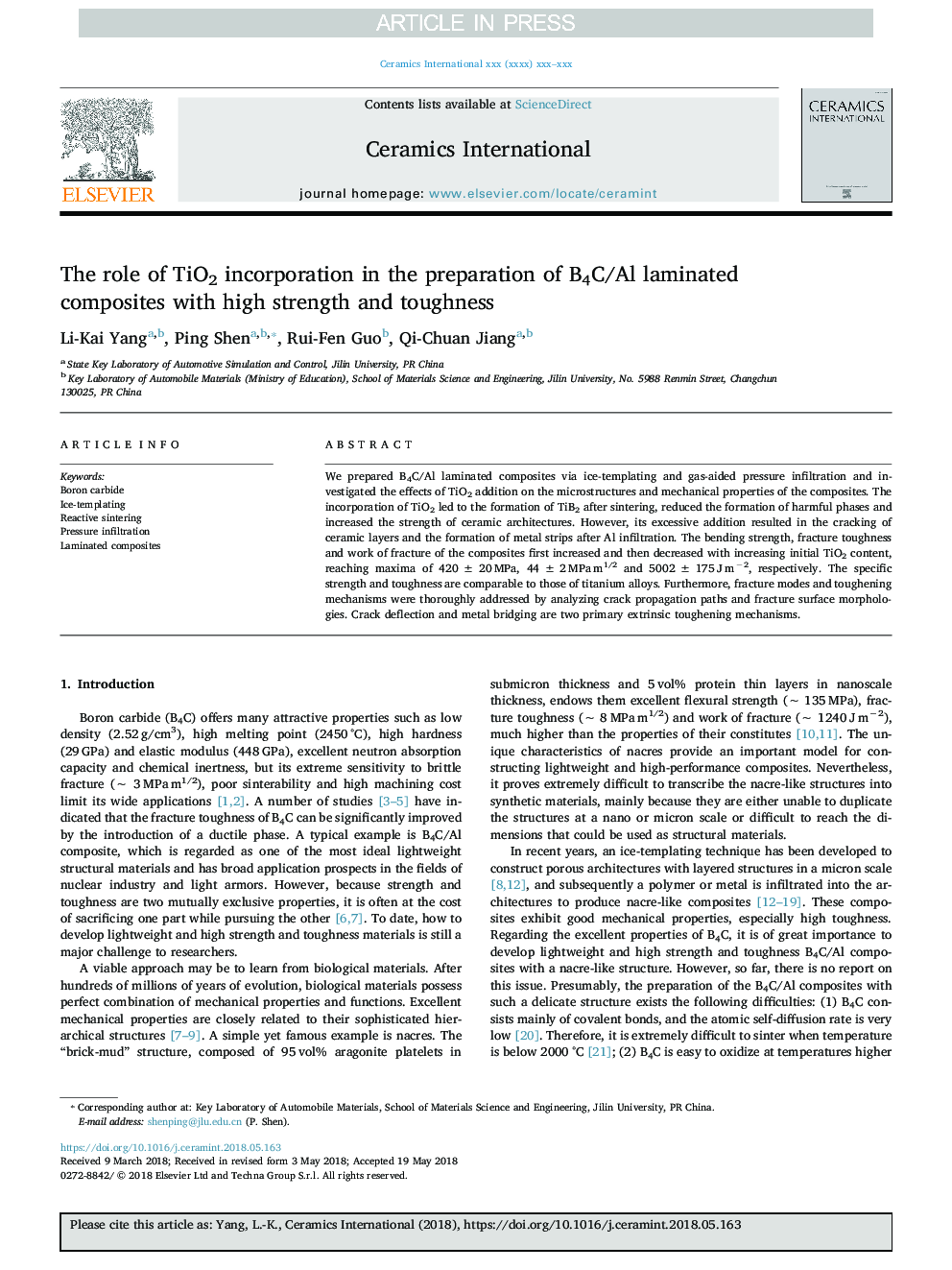| Article ID | Journal | Published Year | Pages | File Type |
|---|---|---|---|---|
| 7886137 | Ceramics International | 2018 | 9 Pages |
Abstract
We prepared B4C/Al laminated composites via ice-templating and gas-aided pressure infiltration and investigated the effects of TiO2 addition on the microstructures and mechanical properties of the composites. The incorporation of TiO2 led to the formation of TiB2 after sintering, reduced the formation of harmful phases and increased the strength of ceramic architectures. However, its excessive addition resulted in the cracking of ceramic layers and the formation of metal strips after Al infiltration. The bending strength, fracture toughness and work of fracture of the composites first increased and then decreased with increasing initial TiO2 content, reaching maxima of 420â¯Â±â¯20â¯MPa, 44â¯Â±â¯2â¯MPaâ¯m1/2 and 5002â¯Â±â¯175â¯Jâ¯mâ2, respectively. The specific strength and toughness are comparable to those of titanium alloys. Furthermore, fracture modes and toughening mechanisms were thoroughly addressed by analyzing crack propagation paths and fracture surface morphologies. Crack deflection and metal bridging are two primary extrinsic toughening mechanisms.
Related Topics
Physical Sciences and Engineering
Materials Science
Ceramics and Composites
Authors
Li-Kai Yang, Ping Shen, Rui-Fen Guo, Qi-Chuan Jiang,
